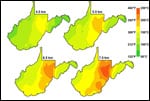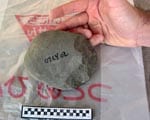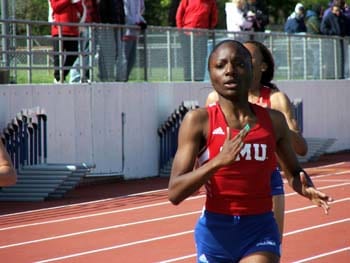Any parent that takes their kid out for a walk knows that children tire more quickly than adults, but why is that? Do kids and small adults walk differently from taller people or do they tire faster for some other reason?
Peter Weyand from Southern Methodist University is fascinated by the effect that body size has on physiological function.
“This goes back to Max Kleiber’s work on resting metabolic rates for different sized animals. He found that the bigger you are the slower each gram of tissue uses energy,” explains Weyand, who adds, “It’s interesting to know how and why metabolism is regulated that way.”
Intrigued by the question of why smaller people use more energy per kilogram body mass than larger individuals when walking, Weyand teamed up with Maurice Puyau and Nancy Butte, from the USDA/ARS Children’s Nutrition Research Center at Baylor College of Medicine, and undergraduate Bethany Smith.
Together they decided to measure the metabolic rates of children and adults, ranging from 5 to 32 years old, weighing between 15.9 kilograms and 88.7 kilograms and ranging in height from 1.07 meters to 1.83 meters, to try to find out why larger people are more economical walkers than smaller people.
Weyand and his colleagues publish their discovery that walkers of all heights use the same amount of energy per stride, making short people less economical because they take more steps. They also derive a fundamental equation to calculate exactly how much energy walkers use with direct applications in all walks of life. The team published its discovery in the article “The mass-specific energy cost of human walking is set by stature” in the current issue of The Journal of Experimental Biology.
First Weyand and colleagues filmed male and female volunteers as they walked on a treadmill at speeds ranging from a slow 0.4 meters per second up to 1.9 meters per second. Meanwhile, they simultaneously measured the walkers’ oxygen consumption and carbon dioxide production rates to obtain their total metabolic rate.
Next the team calculated the amount of energy that each person used for walking by subtracting the basal metabolic rate (energy required to maintain the body’s basic metabolic functions) from the total metabolic rate measured while walking. Finally, the team compared the way each person walked, measuring the walkers’ stride lengths, stride durations and the proportion of each stride they spent in contact with the ground (duty factor) to find out if large and small people walk differently.
Analysing the walkers’ styles, the team found that all of them moved in exactly the same way regardless of their height. Essentially, if you scaled a 5 year old up to 2 meters, the giant child would walk in exactly the same way as a 2 meter tall adult. So large people are not more economical because they walk differently from smaller people.
Next the team calculated the metabolic cost of a stride as each walker moved at their most economical pace and they discovered that walkers use the same amount of energy per stride regardless of their height. So, big people do not become more economical because they walk in a more economical style. Something else must account for their increased economy.
Finally, the four scientists plotted the walkers’ heights against their minimum energy expenditure and they were amazed when they got a straight line with a gradient of almost -1. The walkers’ energy costs were inversely proportional to their heights, with tall people walking more economically than short/smaller people because they have longer strides and have to take fewer steps to cover the same distance. So smaller people tire faster because each step costs the same and they have to take more steps to cover the same distance or travel at the same speed.
Based on this discovery the group derived an equation that can be used to calculate the energetic cost of walking.
“The equation allows you to use your height, weight and distance walked to determine how many calories you burn,” says Weyand.
The equation could also be built into popular pedometers to provide users with a more realistic idea of how many calories they expend walking throughout the day. Finally, the team is keen to extend the equation to calculate metabolic costs at any speed.
“This has clinical applications, weight balance applications and the military is interested too because metabolic rates influence the physiological status of soldiers in the field,” explains Weyand. — Kathryn Knight, The Company of Biologists


















